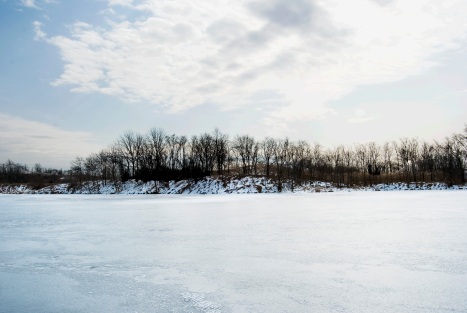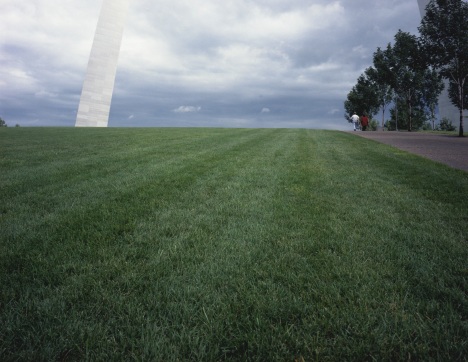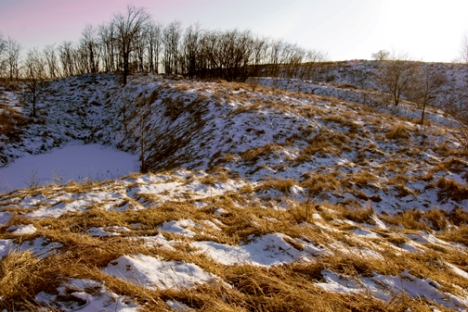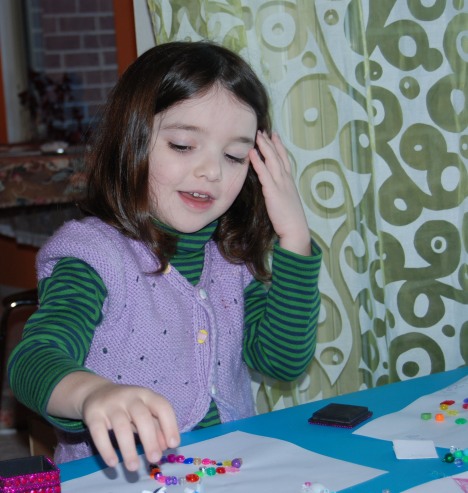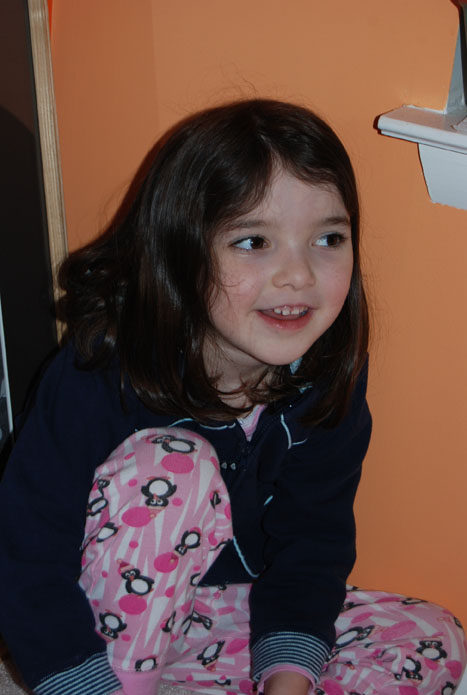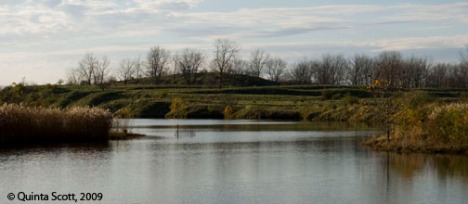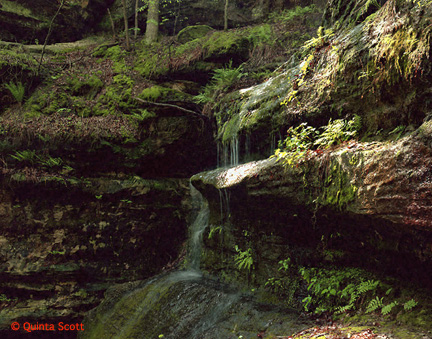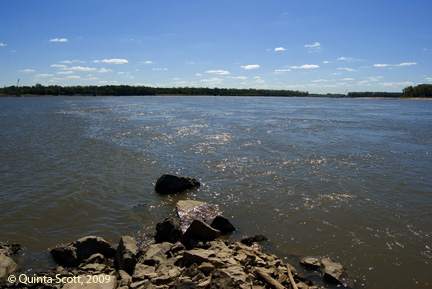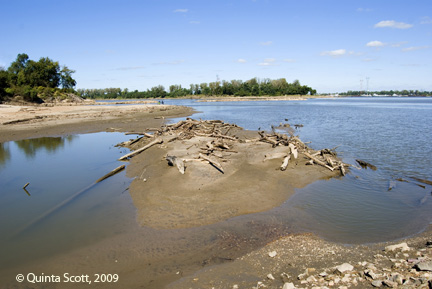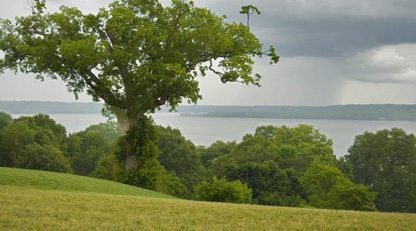I have had this digital camera for almost two years now, and I only just fell in love with pixels.
These days, if you work in large format negatives as I have, all negatives are scanned, because the scanner sees way more than the enlarger, so much so that it even sees the substrate that holds the emulsion. This can be very disturbing when you are manipulating the negative in Photoshop. Pixels are cleaner. And you don’t have to deal with all the dust that loves the negative no matter how hard you work to keep things clean.
Here’s the story. Thursday, on my way home from a book peddling trip to Dubuque, Iowa, on the encouragement of my sister, I stopped in Peoria, Illinois to make photographs of a church my architect father designed in the fifties. Of course I left my tripod at home and had to shoot handle-held in the dark. The camera did its focusing job well enough for small prints at 72 dpi on a blog.
With traditional photography, that is shooting with negatives, we all learned specific ways to expose a negative or expose a transparency. They are different. To expose a negative, you would expose for the shadows and print for the highlights so you would have the detail you want in the shadows and have to work at burning in the highlights. You would probably bracket your exposures so you would at least have a printable negative. Hence, neither the shadows nor the highlights would be perfect on the negative.
With tranparencies you would expose for highlights and the shadows be damned, because if the highlights are overexposed you have nothing.
A tricky photographic problem with film is to balance objects in shadow with bright, highlighted backgrounds, using fill light with flash.

Fill light to see details in the windows and the faces of the bride and groom.
The church I photographed on Thursday had a stained glass window that covered the whole front facade, a sky light over the alter, a side light next to the chapel at the rear of the church, and windows along the aisles. That was it. I did not turn on the lights because I did not want to hassle with the church office.
The front facade was in shadow, so I exposed for the shadows and for the highlights.

Exposure for the Facade in shadow.
My exposure for the facade in shadow blew out the highlights and was unworkable in camera raw and using the shadow and light toogle in Photoshop CS3.
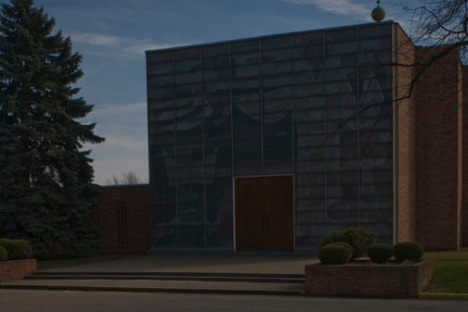
Exposure for the highlights
The exposure for the highlights, the ambient light, yielded a dark facade. But put it in Camera Raw and use the fill toogle and magic happens.

The manipulated image using the fill toogle.
Inside I faced a similar, but more severe situation. The nave of the church was dark with only the skylight and aisle lights and facade light coming in the building. When I exposed for the ambient light in the church I had no detail in the window. So I exposed for the window, using a measurement close to the shadow exposure outside.

Exposure for the window.
The window was perfect, but the rest of the church was dark. But again using the fill toogle in Camera Raw and some adjustments in Photoshop, I came up with an excellent image.

Manipulated image using the fill toogle.
The window is not as detailed as I would like. With more work in Photoshop it could be. But the point I am making is the information is there, where it would not be in either negative film or transparencies.
Hence, with pixels expose for the highlights and manipulate for the shadows. The information is there.
Filed under: Fill Light, Photography | Tagged: Digital Camera, Photography | Leave a comment »














